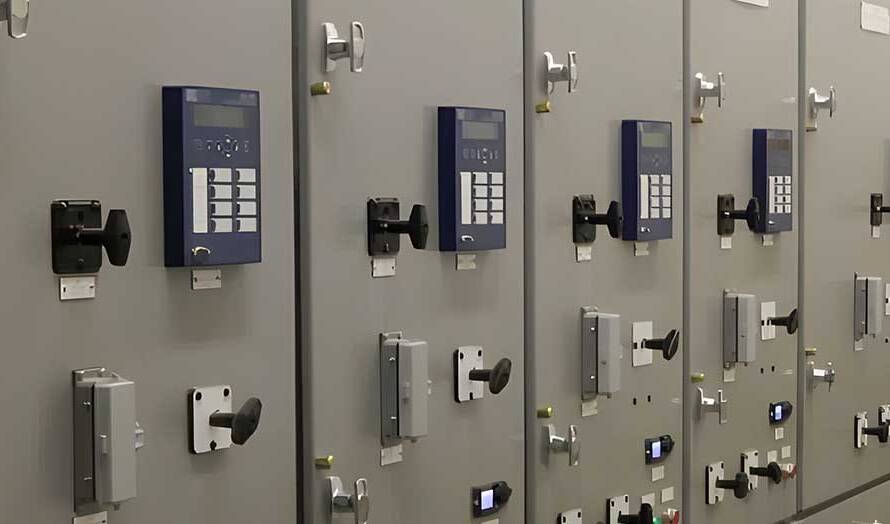There are numerous cases where a flow transmitter may be required for your industry in Qatar, particularly when a flow meter is put on a piping series but the meter is not easily accessible to the operator. A flow transmitter may be fitted in conjunction with the flow meter to broadcast the flow meter’s output to the control station staffed by the operator. This helps the operator maintain the correct volume, flow rate, temperature, and pressure of the material being moved via the pipeline.
What Are Flow Transmitters?
Flow transmitters, also known as flow meters or flow sensors, are devices designed to measure the rate of flow of a fluid (liquid or gas) through a pipeline or conduit. They play a crucial role in a wide range of industries, including petrochemical, pharmaceutical, food and beverage, water treatment, and more.
The primary purpose of flow transmitters is to provide accurate and real-time data on the flow rate of a fluid. This information is essential for process control, monitoring, and optimization. By knowing how much of a substance is moving through a system at any given time, operators can make informed decisions to maintain efficiency, safety, and quality.
What are the types of Flow Transmitters?
Flow transmitters come in various types, each applicable to specific applications and environments. Here are some common types:
- Differential Pressure (DP) Flow Transmitters:
– These rely on the pressure drop across an obstruction in the flow path to determine flow rate.
– Orifice plates, venturi tubes, and flow nozzles are examples of primary elements used in DP flow transmitters.
- Coriolis Mass Flow Transmitters:
– These operate on the principle of Coriolis force, which causes a tube to twist when fluid flows through it.
– Highly accurate and suitable for a wide range of fluid types.
- Electromagnetic Flow Transmitters:
– Utilize Faraday’s law of electromagnetic induction to measure flow.
– Excellent for conductive liquids and can handle corrosive substances.
- Ultrasonic Flow Transmitters:
– Use ultrasonic waves to measure flow velocity.
– Non-invasive and suitable for a variety of liquids.
- Thermal Mass Flow Transmitters:
– Measure flow by calculating the heat transfer between a heated element and the flowing fluid.
– Ideal for gas flow measurement.
What is the Importance of Flow Transmitters?
So, why are flow transmitters so critical in industrial processes? Here is why:
- Process Control:
– Flow transmitters provide real-time data, enabling precise control of flow rates. This is crucial for maintaining product quality and consistency in manufacturing processes.
- Safety:
– In industries dealing with hazardous materials, knowing the flow rate is vital for safety. It helps prevent overflows, leaks, and other potentially dangerous situations.
- Resource Optimization:
– By accurately measuring flow rates, companies can optimize resource usage, reduce waste, and save energy and costs.
- Compliance:
– Many industries are subject to strict regulations regarding environmental impact and product quality. Flow transmitters help ensure compliance with these standards.
- Troubleshooting:
– When something goes wrong in a process, flow transmitters can be valuable diagnostic tools. Sudden changes in flow rates can signal issues that need immediate attention.
Challenges and Considerations
While flow transmitters are indispensable tools, there are some challenges and considerations to remember:
- Calibration:
– Regular calibration is essential to maintain accuracy. Environmental conditions and wear and tear can affect performance.
- Fluid Properties:
– The type of fluid being measured can impact the choice of flow transmitter. For example, some are better suited for viscous liquids, while others work well with gases.
- Installation and Maintenance:
– Proper installation and routine maintenance are crucial to ensure reliable performance.
- Cost:
– High-quality flow transmitters can be expensive, but the investment often pays off in improved efficiency and reduced downtime.
Future Trends in Flow Transmitters
As technology continues to advance, so do flow transmitters. Here are some future trends to watch for:
- Wireless Connectivity:
– Flow transmitters are becoming more interconnected, allowing for remote monitoring and control.
- IoT Integration:
– The Internet of Things (IoT) is being leveraged to gather and analyze flow data in real-time, enabling predictive maintenance and further optimization.
- Advanced Materials:
– Innovations in materials will lead to flow transmitters that can handle even more challenging fluids and environments.
- Improved Accuracy:
– Ongoing research and development aim to enhance the precision of flow transmitters, making them even more reliable.
Why ServeGas?
Servegas’s product range encompasses a wide variety of flow transmitters, catering to different flow rates, fluid types, and environmental conditions. Whether it’s monitoring the flow of liquids, gases, or steam, our transmitters deliver real-time data with proper results. This expertise allows us to serve diverse industries, with tailored solutions that suit their unique needs.
To know more, visit: https://servegas.qa/product/flow-transmitter/


